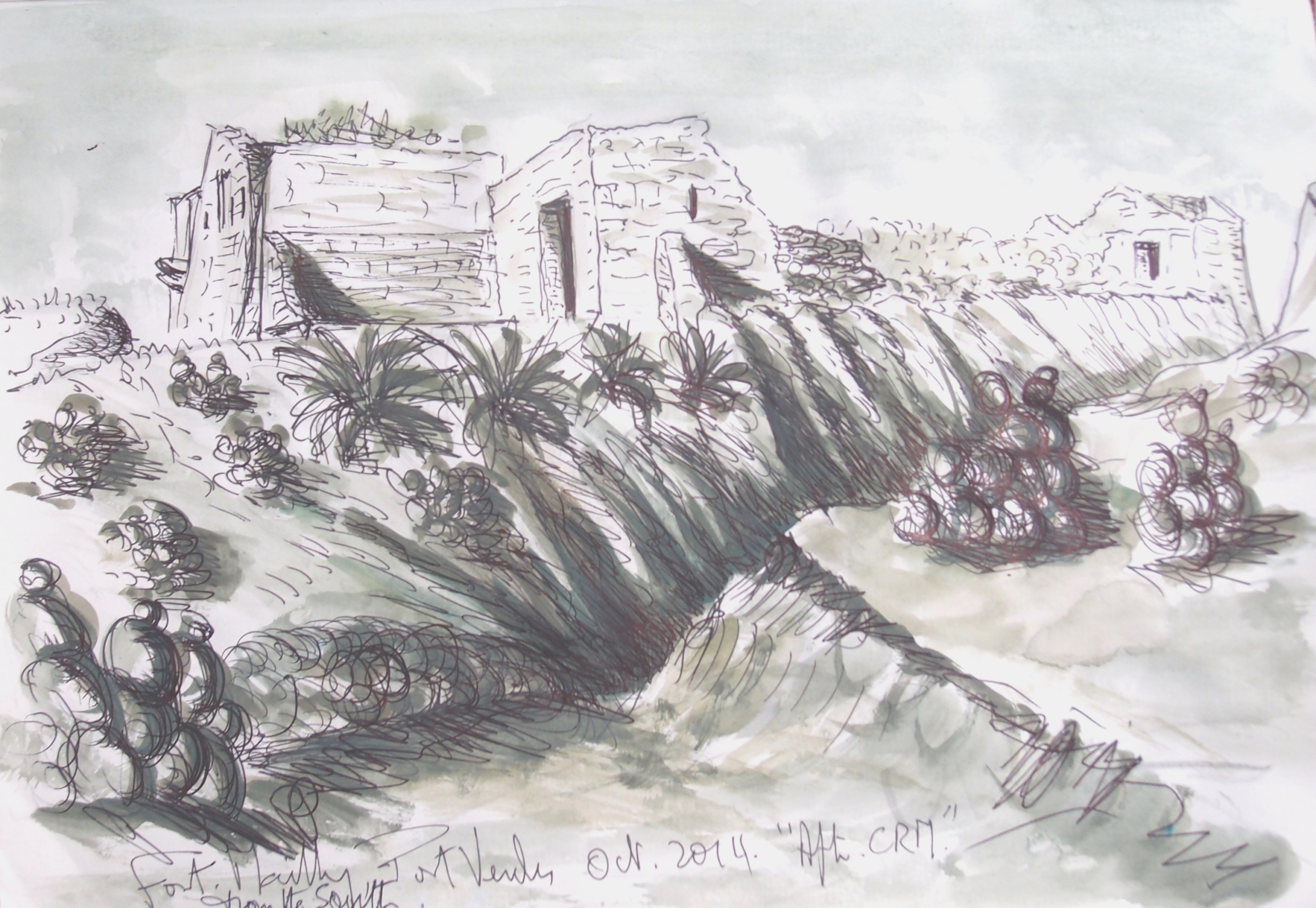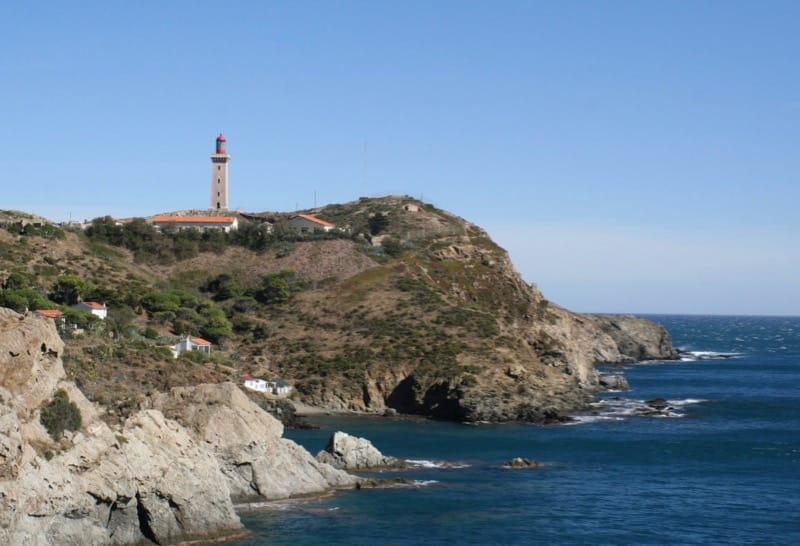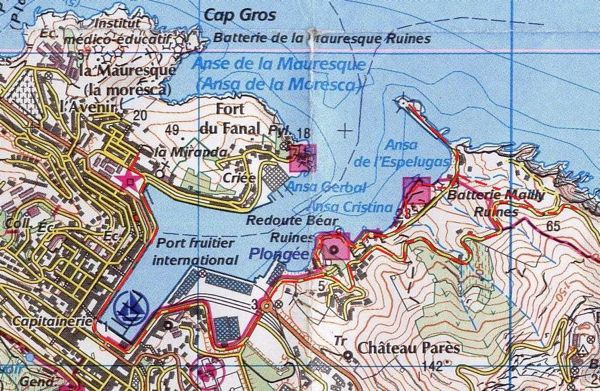WALK THE REGION WITH TED AND KATE HISCOCK
“Anse de l’Aspulgas & le Feu du Mole”
(4k 2.5 miles ) – 1 hour
This walk also takes in the marina, the commercial port and then on out beyond the headland overlooking the harbour wall lighthouse ‘Feu de Mole’ (dating from 1848) and then touches the wild and rugged garrigue of Cap Bear.
Once around the back of the Port Commercial the feeling that Charles Rennie Mackintosh had been there before is evident. Again much of the beauty is the natural terrain, wild life and realisation of the need for medieval fortresses on many headlands and hilltops.
From La Place de ’Obelisque in Port Vendres, drop down to the harbour and walk along Quai Pierre Forgas past the fishing fleet and moored yachts in the marina and round the quai to the opposite side; Quai de la Douane Republique to the side of the Commercial Port.
Having hugged the perimeter fence at the back of the Port du Commerce, take the left fork (Avenue du General Leclerc) heading back towards the harbour shore.
Walk along Route de la Jeté where the road follows the rocky shore past the Anse des Tamorins (apparently soon to be developed into a mixed leisure and extension of the port) and then immediately before the tunnel (built by the occupying German army during the last war to facilitate the transport of ammunitions) take the rough road to the left around the headland which is marked pedestrians only.
Sadly this appears to be a canine latrine for quite a distance so watch your step!

Around the headland where there is a good view over the estuary to Port Vendres, the path touches the road at the Anse de Christine, the lovely restaurant pre Covid, Le Poisson Rouge before veering back around another small headland taking in some of the ancient workings of one of Vauban’s fortresses, the Batterie Mailly.

The frequent displays of Mackintosh’s factual sketches give historic account of previous glory of these ancient relics.
It was here that Margaret Mackintosh in 1929, having been widowed at the end of 1928, brought her husband’s ashes and scattered them from the end of the Mole.

The original barrage bearing the flimsy looking light house (the Mole) is hundreds of years old and the actual elegant light house itself dates from 1869 but currently repair work is on-going as a result of storm damage.
Over Christmas 2008, the Jeté and light house were badly damaged by massive storms with the loss of many tonnes of sea defences and the fine wrought iron spiral staircase to the lighthouse.
On the opposite side of the road from the scuba diving club, a small set of steps, with a yellow flash painted on a rock leads the path away from the beach and steeply up a winding rocky track through the garrigue.
This is an area of unspoiled thick shrubs and haven to many birds and animals.
After about 300m of rocky climb, the track comes out on the road to Cap Bear. It is worth following the road a short distance to the corner where there is a rugged track descending to a scattering of homes.

The views down the cliffs to the ocean and rocks below, over Port Vendres and beyond are spectacular.
The return to Port Vendres is best taken by retracing steps down the hill but continuing on the tarmac which winds in and out of a couple of valleys with wonderful views looking to Port Vendres, Tours Madeloc & Massane, Fort St. Elme and on clear days, Pic Canigou in the distance.




